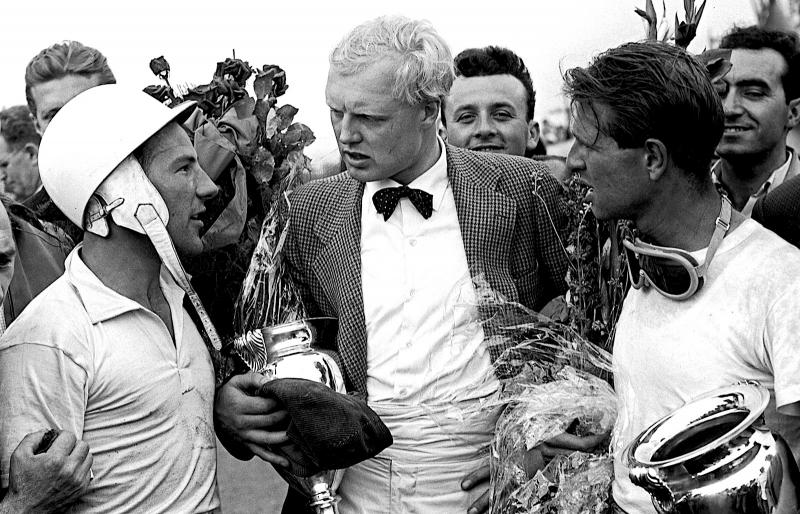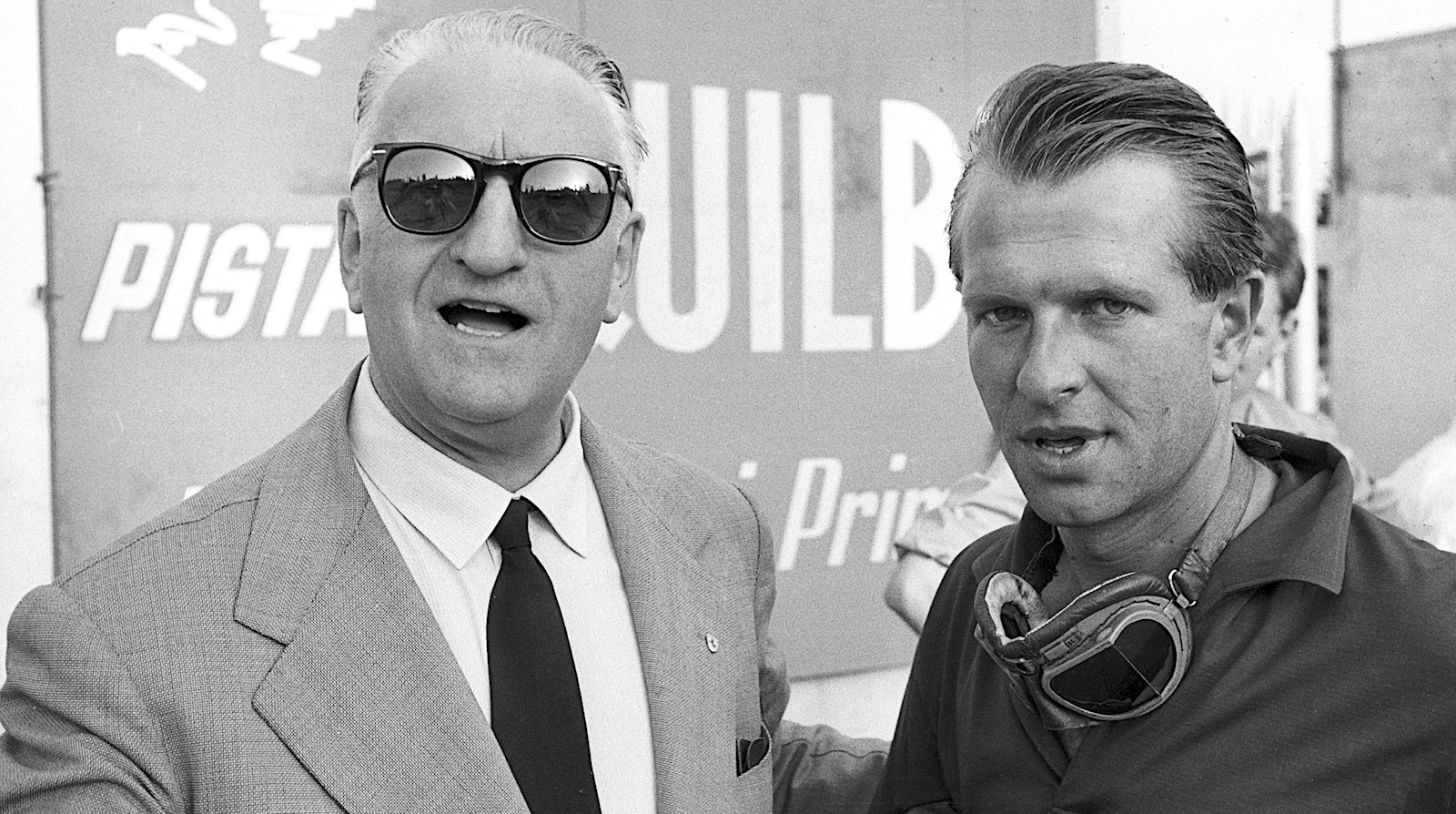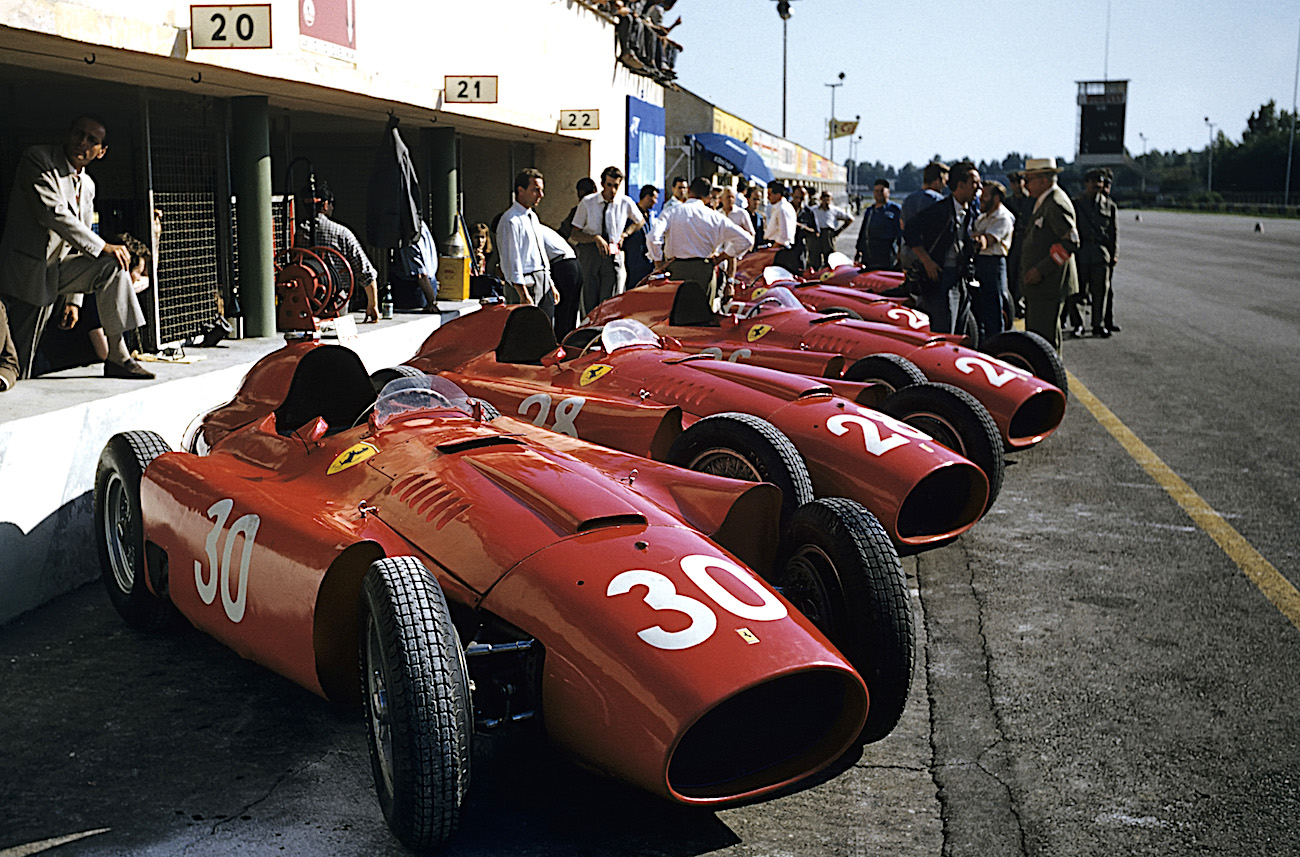Ferrari: Race to Immortality review - death and glory in 1950s motor racing | reviews, news & interviews
Ferrari: Race to Immortality review - death and glory in 1950s motor racing
Ferrari: Race to Immortality review - death and glory in 1950s motor racing
Early years of the legendary red cars from Maranello

And so the mini-boom in motor racing movies continues, this time with a look back at the history of Ferrari and the intense on-track battles of the 1950s, a decade in which the Scuderia won four of its 15 Formula One World Drivers Championships.
The film coincides with this year’s 70th anniversary of Ferrari, but makes no pretence of being a thorough history of the illustrious marque. It chiefly concerns itself with the period roughly bracketed by the traumatic 1955 Le Mans race where Hawthorn won (driving a Jaguar on that occasion) despite the accident which killed more than 80 spectators, and Collins’s death and Hawthorn’s championship victory with Ferrari, both in 1958 (pictured below, Enzo Ferrari with Collins). Director Daryl Goodrich has conceived the film as an elegy for a gilded but unspeakably dangerous era in which daring young men and their invariably glamorous female companions laughed in the face of the sport’s terrifying mortality statistics (there’s a little clip of World War Two pilots jumping into their Spitfires to reinforce the point). This creates a slight sense of confusion, since it means the narrative isn’t all about Ferrari after all, but Goodrich has compensated by packing his film with sumptuous and spectacular period footage, most of it in colour and of amazingly high quality.
Director Daryl Goodrich has conceived the film as an elegy for a gilded but unspeakably dangerous era in which daring young men and their invariably glamorous female companions laughed in the face of the sport’s terrifying mortality statistics (there’s a little clip of World War Two pilots jumping into their Spitfires to reinforce the point). This creates a slight sense of confusion, since it means the narrative isn’t all about Ferrari after all, but Goodrich has compensated by packing his film with sumptuous and spectacular period footage, most of it in colour and of amazingly high quality.
Thus you get impossibly gorgeous scenes of sun-drenched Monte Carlo with historic racing cars zooming under the palms through its winding streets, views of the motor-racing circus basking under brilliant Florida skies, period clips from Monza, Silverstone and the fearsome Nürburgring and plenty more. Home movie footage of drivers and friends cheerfully socialising, apparently without a care in the world, lends considerable poignancy. The sense of a lost heroic era is also amplified by the way that the 1950s cars, especially the brilliant red Ferraris (pictured below), were like mobile works of art compared to the angular, computer-designed creations of the present day. Voice-over commentary – everybody now copies the Senna technique of keeping the voices but dropping the talking heads – is supplied by veteran motorsport journalists and drivers of yore including Stirling Moss, Phil Hill and Alfonso de Portago, while Hawthorn’s ex-fiancée Jean Howarth and Collins’s American widow Louise King lend some personal colour to the story. King in particular is striking for the way she cheerfully celebrates her brief year-and-a-half of marriage to Collins and recalls how they always refused to talk about death. It was Collins’s demise, at the age of 26, which prompted Enzo Ferrari’s comment that “the era of gentleman drivers is ended”. It was Enzo too who remarked bleakly that “one must keep working continually. Otherwise one thinks of death.”
Voice-over commentary – everybody now copies the Senna technique of keeping the voices but dropping the talking heads – is supplied by veteran motorsport journalists and drivers of yore including Stirling Moss, Phil Hill and Alfonso de Portago, while Hawthorn’s ex-fiancée Jean Howarth and Collins’s American widow Louise King lend some personal colour to the story. King in particular is striking for the way she cheerfully celebrates her brief year-and-a-half of marriage to Collins and recalls how they always refused to talk about death. It was Collins’s demise, at the age of 26, which prompted Enzo Ferrari’s comment that “the era of gentleman drivers is ended”. It was Enzo too who remarked bleakly that “one must keep working continually. Otherwise one thinks of death.”
Extraordinary times, and that line about the past being a foreign country where they do things differently seems especially apt. It’s a pity that Goodrich has over-egged it by drenching his soundtrack with grandiose and sorrowful music, because the images and the story speak for themselves. This film isn’t designed as a multiplex-buster, but anyone with a taste for motorsport history will find it irresistible.
The future of Arts Journalism
You can stop theartsdesk.com closing!
We urgently need financing to survive. Our fundraising drive has thus far raised £49,000 but we need to reach £100,000 or we will be forced to close. Please contribute here: https://gofund.me/c3f6033d
And if you can forward this information to anyone who might assist, we’d be grateful.

Subscribe to theartsdesk.com
Thank you for continuing to read our work on theartsdesk.com. For unlimited access to every article in its entirety, including our archive of more than 15,000 pieces, we're asking for £5 per month or £40 per year. We feel it's a very good deal, and hope you do too.
To take a subscription now simply click here.
And if you're looking for that extra gift for a friend or family member, why not treat them to a theartsdesk.com gift subscription?
more Film
 London Film Festival 2025 - crime, punishment, pop stars and shrinks
Daniel Craig investigates, Jodie Foster speaks French and Colin Farrell has a gambling habit
London Film Festival 2025 - crime, punishment, pop stars and shrinks
Daniel Craig investigates, Jodie Foster speaks French and Colin Farrell has a gambling habit
 I Swear review - taking stock of Tourette's
A sharp and moving tale of cuss-words and tics
I Swear review - taking stock of Tourette's
A sharp and moving tale of cuss-words and tics
 A House of Dynamite review - the final countdown
Kathryn Bigelow's cautionary tale sets the nuclear clock ticking again
A House of Dynamite review - the final countdown
Kathryn Bigelow's cautionary tale sets the nuclear clock ticking again
 theartsdesk Q&A: Idris Elba on playing a US President faced with a missile crisis in 'A House of Dynamite'
The star talks about Presidential decision-making when millions of lives are imperilled
theartsdesk Q&A: Idris Elba on playing a US President faced with a missile crisis in 'A House of Dynamite'
The star talks about Presidential decision-making when millions of lives are imperilled
 Urchin review - superb homeless drama
Frank Dillane gives a star-making turn in Harris Dickinson’s impressive directorial debut
Urchin review - superb homeless drama
Frank Dillane gives a star-making turn in Harris Dickinson’s impressive directorial debut
 Mr Blake at Your Service review - John Malkovich in unlikely role as an English butler
Weird comedy directed by novelist Gilles Legardinier
Mr Blake at Your Service review - John Malkovich in unlikely role as an English butler
Weird comedy directed by novelist Gilles Legardinier
 Don't Let's Go to the Dogs Tonight review - vivid adaptation of a memoir about a Rhodesian childhood
Embeth Davidtz delivers an impressive directing debut and an exceptional child star
Don't Let's Go to the Dogs Tonight review - vivid adaptation of a memoir about a Rhodesian childhood
Embeth Davidtz delivers an impressive directing debut and an exceptional child star
 One Battle After Another review - Paul Thomas Anderson satirises America's culture wars
Leonardo DiCaprio, Teyana Taylor, and Sean Penn star in a rollercoasting political thriller
One Battle After Another review - Paul Thomas Anderson satirises America's culture wars
Leonardo DiCaprio, Teyana Taylor, and Sean Penn star in a rollercoasting political thriller
 Steve review - educator in crisis
Cillian Murphy excels as a troubled headmaster working with delinquent boys
Steve review - educator in crisis
Cillian Murphy excels as a troubled headmaster working with delinquent boys
 Can I get a Witness? review - time to die before you get old
Ann Marie Fleming directs Sandra Oh in dystopian fantasy that fails to ignite
Can I get a Witness? review - time to die before you get old
Ann Marie Fleming directs Sandra Oh in dystopian fantasy that fails to ignite
 Happyend review - the kids are never alright
In this futuristic blackboard jungle everything is a bit too manicured
Happyend review - the kids are never alright
In this futuristic blackboard jungle everything is a bit too manicured

Add comment